On January 10, massive flash-flooding destroyed Grantham, a small agricultural town of about 370 people, located 100 kilometres west of the Queensland capital Brisbane. The once sleepy flood-plain settlement received no official warning from Queensland emergency services or other government agencies and was devastated within minutes by an 8-metre wall of water.
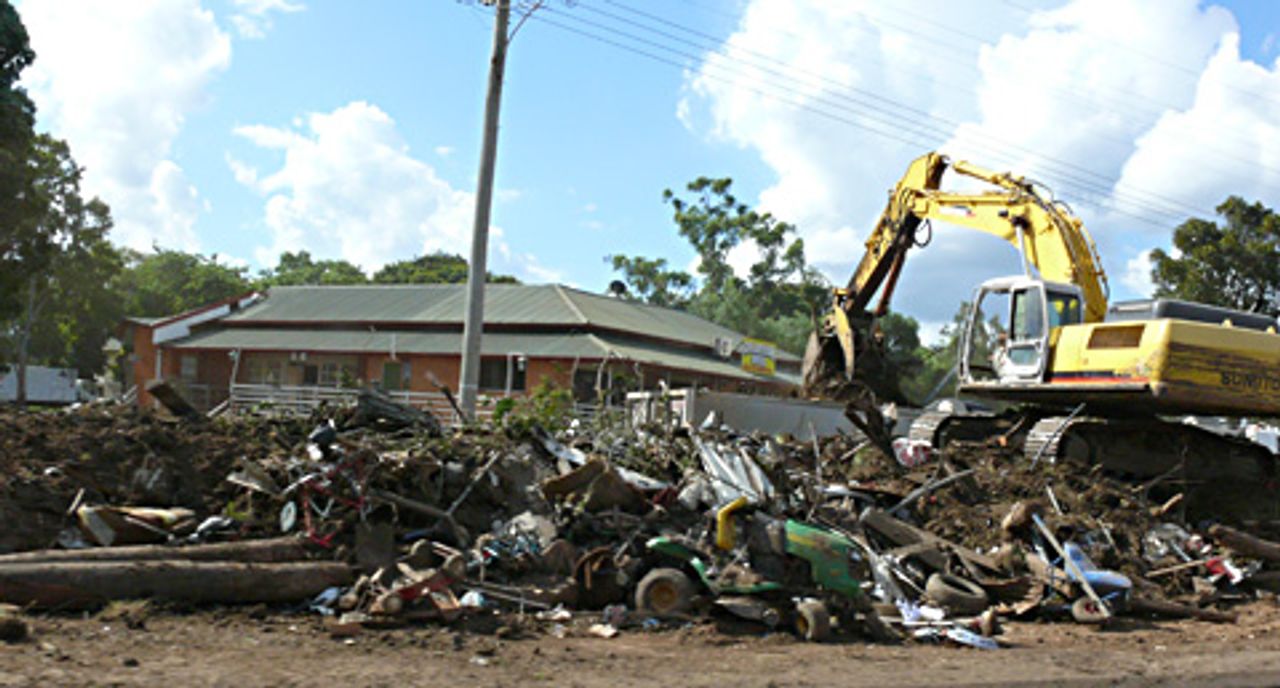 Main street, Grantham
Main street, Grantham
At least 15 people from the settlement were killed. This is by far the largest death toll in a single community during the unprecedented flooding that hit the state over the past two months. Several Grantham residents are still listed as missing.
It is now three weeks since the catastrophe and while the Gatton-Helidon Road, which passes through Grantham, is expected to re-open this weekend, all entry into the community is controlled by the Queensland police.
When we arrived on Wednesday, roadblocks were still in place and only those with friends or relatives in the community, and provided with an orange wrist tag, were allowed to enter.
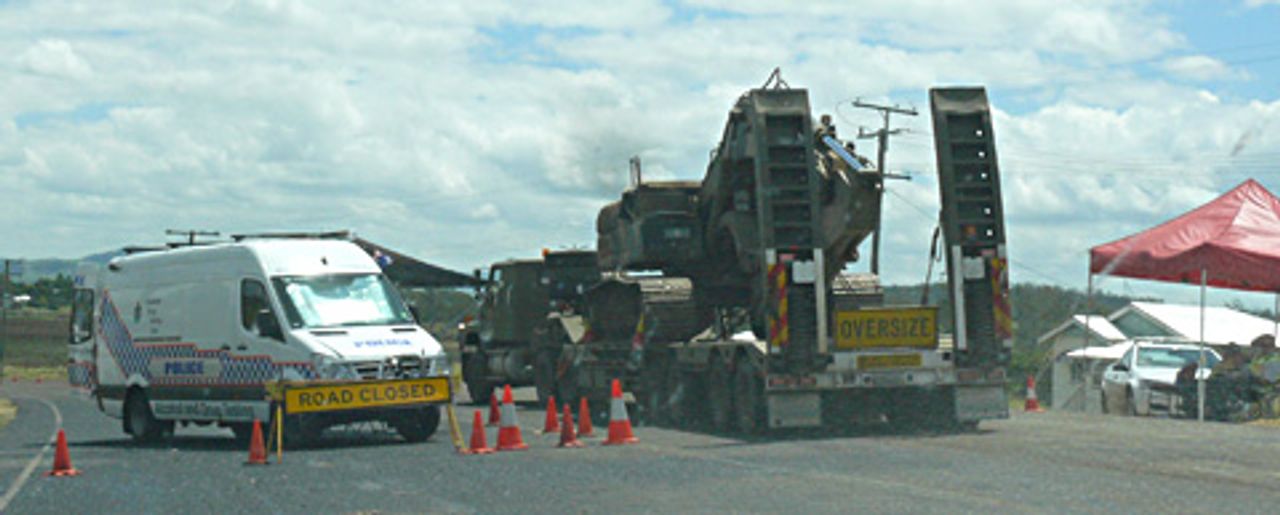 Army truck passing through a police road block
Army truck passing through a police road block
Awaiting permission to enter Grantham, which lay a couple of kilometres away shimmering in the hazy heat, it looked quiet, even tranquil. Nothing could have prepared us for the devastation that we were about to see. “Nightmarish,” “war zone,” “total destruction” are phrases that immediately sprang to mind.
Marty Warburton, a local service station owner and former municipal councillor, escorted us into the town. While the clean-up has removed some of the huge quantities of debris, and the creek bed and the local railway bridge have been cleared to some extent, evidence of the catastrophe was everywhere.
Twisted cars, refrigerators, bathtubs, even mud-caked mobile phones were scattered across the town. Most of the shops along the main street were trashed by the floods; a council skateboard park had been turned upside down and was in ruins; and dozens of giant riverbank gum trees had been overturned or torn out of the ground.
We drove past street after street of wrecked homes—some just piles of scattered wood, metal and glass, others crumpled ruins. Numbers were completely dislodged from bent foundation stumps. Many of the old-style “Queenslanders”—wooden homes built on stilts above the flood plain—were simply lifted off their foundations and washed away.
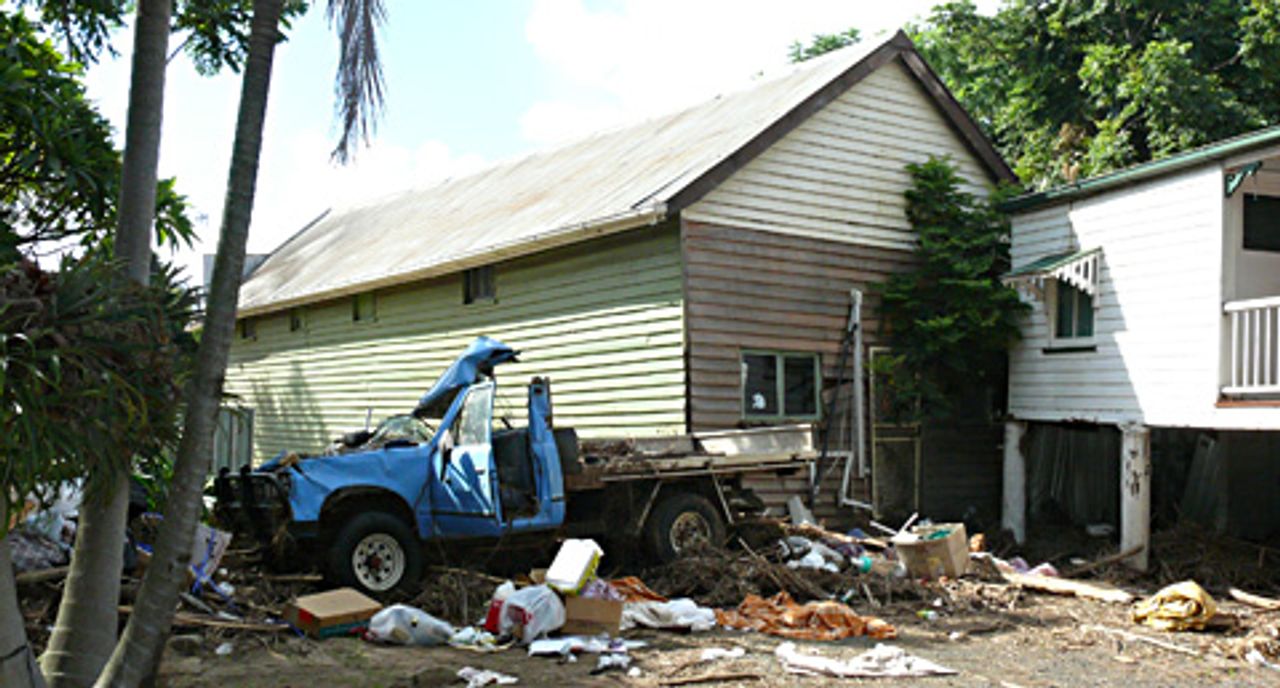 Remains of car and house destroyed by the flood
Remains of car and house destroyed by the flood
On one side of the main road and in the middle of an empty field lay a bent and twisted home. Lifted from its foundations, it was carried right past the settlement by flood waters. One shudders to imagine the terror confronting the family trapped inside the house as it was carried away by the wall of water. Miraculously, the family was able to break through the structure and clamber onto the roof where they were eventually rescued by a helicopter.
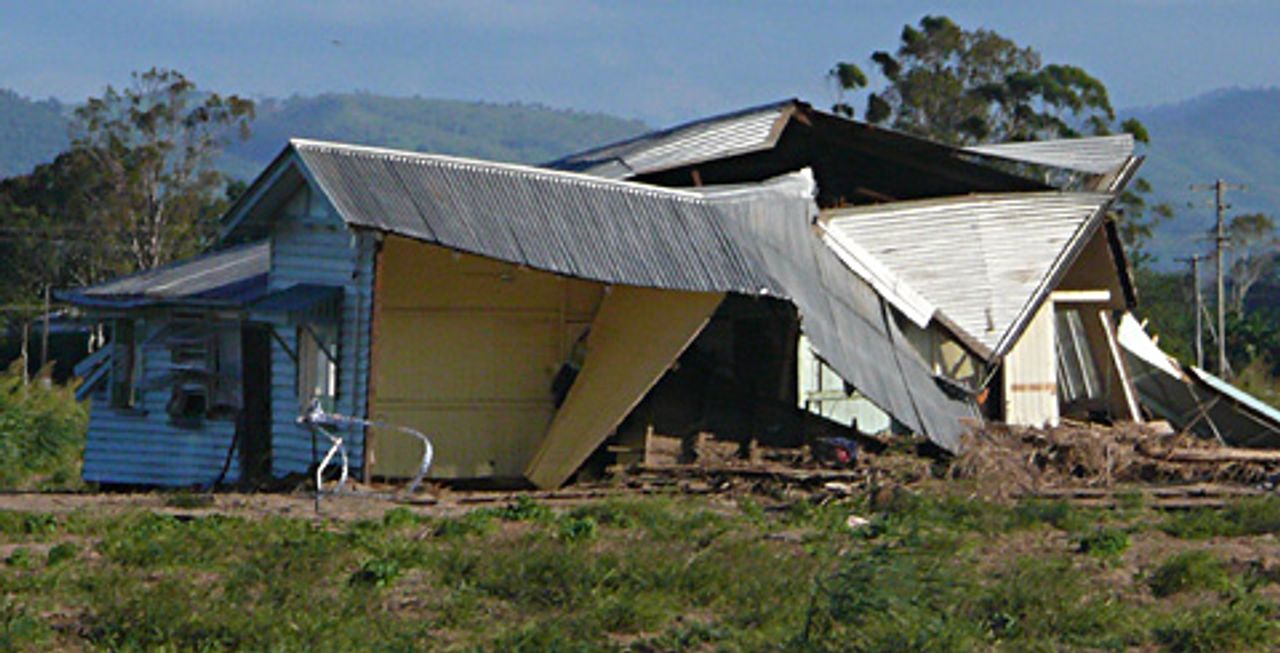 Dislodged house carried into empty field
Dislodged house carried into empty field
According to the Lockyer Valley regional council, the infrastructure damage bill for the district could reach $1 billion. About 85 percent of council-owned bridges have either been completely washed away or partially destroyed, with hundreds of roads seriously damaged or unsafe.
Mayor Steve Jones told the local press on Wednesday that more than $400 million of this amount will have to be provided by the already cash-strapped council. “All our current projects will have to be re-evaluated,” he said.
Flooding is not a new phenomenon in Grantham. It regularly occurs along the rich river valley that produces much of Australia’s lettuces, broccoli, cabbages and capsicums, and many other vegetables.
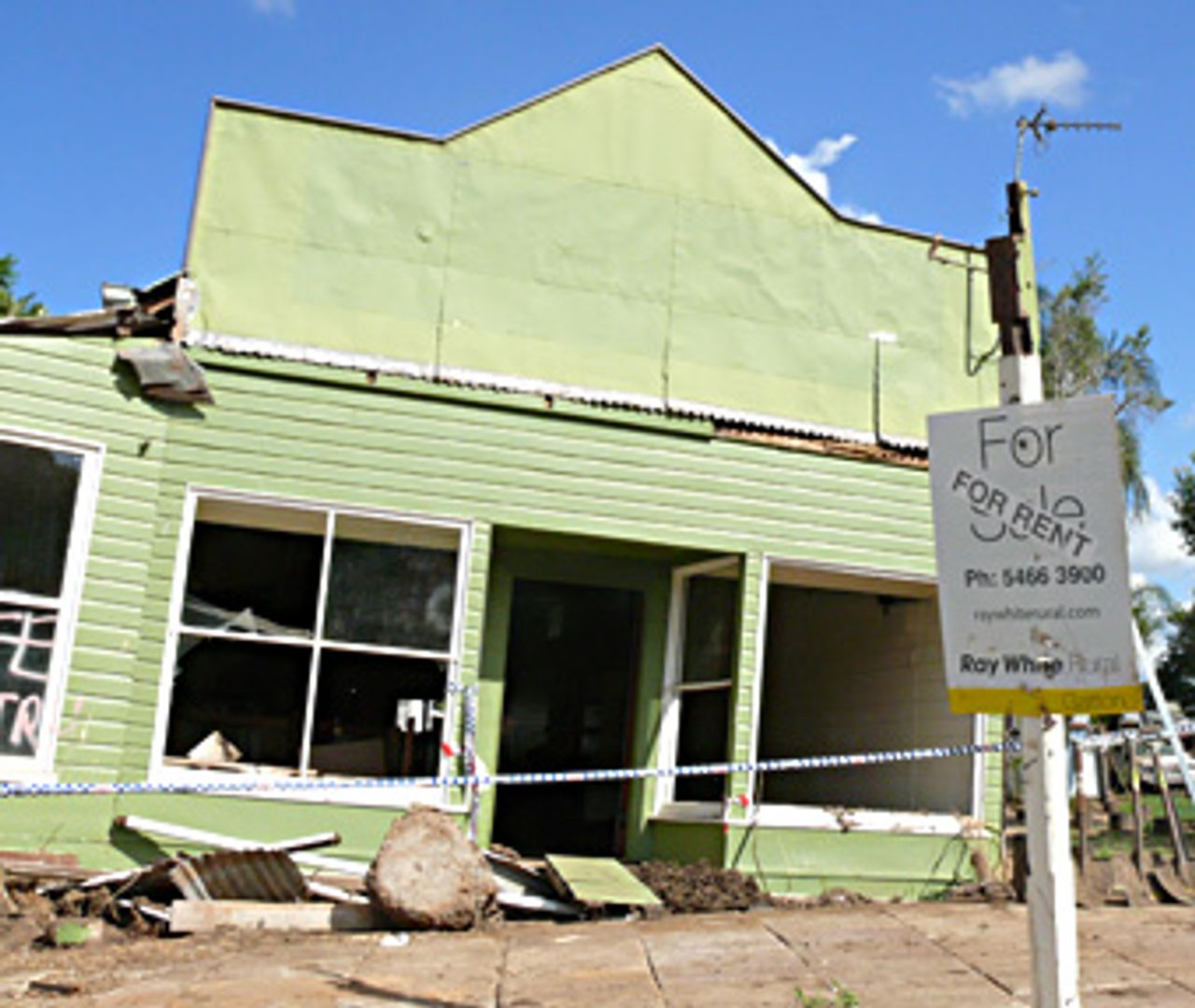 Grantham antique store destroyed
Grantham antique store destroyedEveryone we spoke with, however, explained that what happened on January 10, when over one-tenth of the area’s average annual rainfall fell on nearby hills and raced down the valley, had never been seen in living memory.
Residents told us that the roar of the “inland tsunami” was like a jet engine as it thundered through the Lockyer Valley, separating families and sweeping away homes and loved ones—husbands, wives, children. One newspaper reported that a few days after the disaster, soldiers and emergency service workers searching for bodies in the tonnes of mud that had engulfed the town were “at times unable to tell if a globe they felt under their feet was a ruined pumpkin or a human head”.
Over the past week, many of the traumatised residents have been attending the funerals of friends and neighbours killed in the catastrophe. Pauline Magner, her 23-month-old granddaughter Jessica Keep, and her son Matthew Keep’s mother-in-law Dawn Radke were among those buried in the past seven days. Jessica was torn from her six-month pregnant mother Stacey’s arms when the flood hit the family home. Only Stacey and Matthew, and their two other children—Maddison, 5, and Jacob, 4—survived.
What is clear from even a cursory discussion with Grantham flood survivors is that the government response to the disaster borders on criminally negligent. The emergency relief centres were established by residents, who are becoming increasingly frustrated by the lack of support from government agencies. Immediately following the flash flood, residents were told that if they left the community they would not be able to get back in because it was a crime scene.
While scores of volunteers are assisting with the recovery, the most obvious presence is the Australian army—soldiers in camouflage clothes, with heavy-earth moving vehicles and other engineering equipment, portable toilets and other facilities.
According to residents, a military no-fly zone was imposed over the valley. Some suggested that one of the reasons for this and the large number of military personnel was that the main concern was to find ordnance, explosives and ammunition that might have been swept into the area from a nearby military base.
Two residents told the WSWS that the military had demolished their homes and cars without any consultation. These could have been salvaged, one said, but instead they were “turned into ruins”. Another Grantham resident confronted Queensland Premier Anna Bligh about the lack of relief and recovery resources during Bligh’s visit to the settlement. “She agreed it was terrible,” he said, “but virtually nothing has been done about it.”
During our visit, two Queensland Corrective Services officials arrived and “volunteered” the help of an unknown number of inmates from the state’s prisons. Grantham residents no doubt are appreciative of any assistance they can get. However, the offer of prison labour typifies the niggardly, budget-driven response of the state and federal governments, not just for Grantham residents but for tens of thousands of Queensland residents whose lives have been turned upside down.
Marty Warburton spoke at length about the disaster and inadequate response of federal and state government authorities during our first visit to Grantham (see video). An elected head of the relief fund, Warburton was threatened with arrest by police if he attempted to speak to Bligh and Australian Prime Minister Julia Gillard during their media photo-op visit a few days after the disaster.
Warburton told us that he was shocked by the threat and said it typified the callous indifference of the state and federal government to the plight of the residents. He said the government response to the disaster was a warning.
“What happened to us—the fact that it took us five days to get anything done for us by the powers-that-be and all the bureaucratic duck-shoving and indifference to the human situation—shows what’s going to face communities around Australia when they have to confront this sort of situation.”
The author also recommends:
Australia’s floods: a failure of government and the profit system
[29 January 2011]
“The powers-that-be left us for dead”
Australia: Grantham flood survivor threatened with arrest
[18 January 2011]
Queensland flood chief Major-General Mick Slater issues ominous warning
[14 January 2011]
